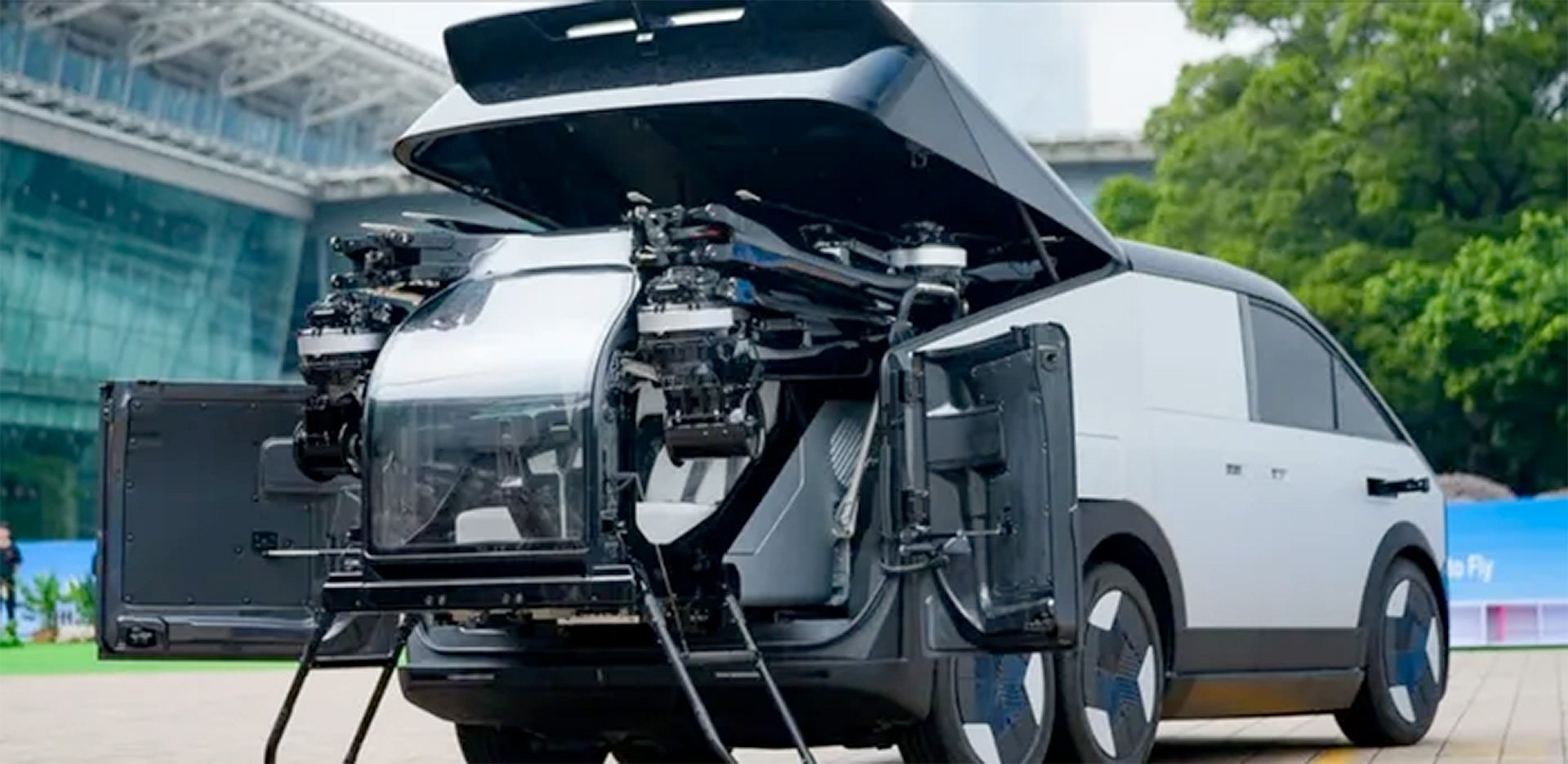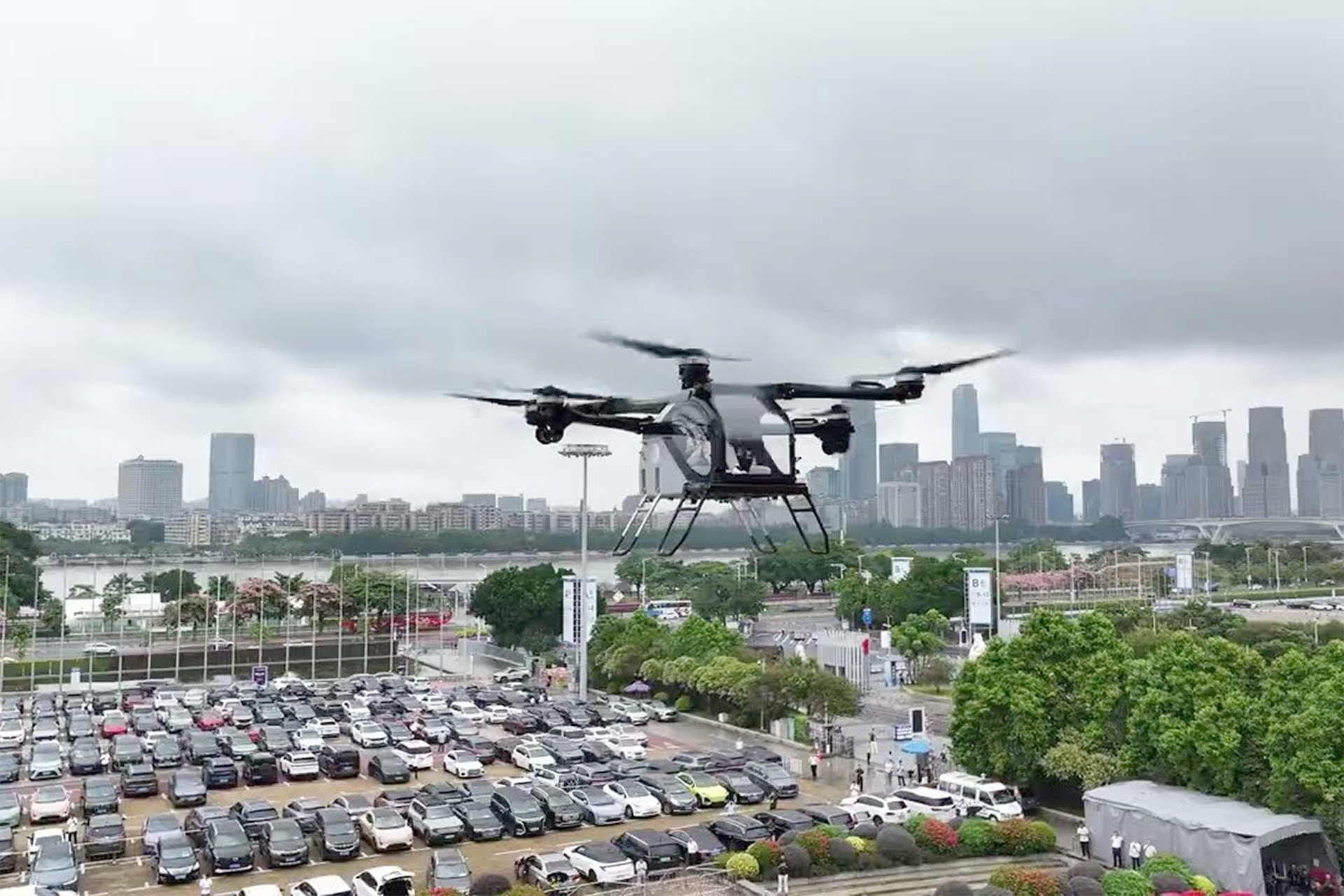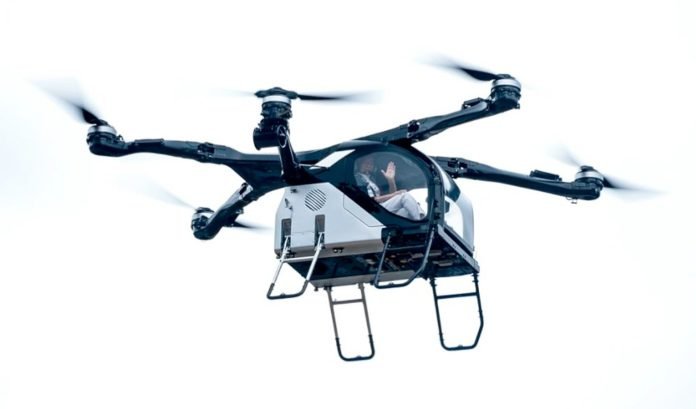XPeng Aeroht, a subsidiary of XPeng Motors, has achieved a major milestone with its first public piloted flight demonstration of the Land Aircraft Carrier’s air module. The event took place at the Guangzhou Auto Show, marking a significant moment in the company’s development of electric vertical takeoff and landing (eVTOL) vehicles. Founder and experienced pilot Zhao Deli personally piloted the flying car, showcasing its capabilities to media and attendees.
Key features of the Land Aircraft Carrier and Air Module
The Land Aircraft Carrier is a modular vehicle comprising a ground-based “mothership” and a detachable air module. The mothership, a six-wheel, three-axle vehicle, stores the air module in its rear trunk, which features a semi-transparent glass design, allowing the flying component to remain partially visible.
During the flight, the air module separates from the mothership, unfolding its six arms and propellers. It operates fully on electricity, supporting both manual joystick control and autonomous flying modes. The panoramic cockpit design enhances visibility, and the module can perform vertical takeoffs, landings, and mid-air maneuvers such as turning and circling. Once docked back into the mothership, the air module recharges automatically.
First public demonstration
The Guangzhou Auto Show marked the first public demonstration of the flying car’s automated separation and reattachment mechanism. The flight module performed a series of maneuvers, including forward and backward movement, turns, and vertical takeoffs and landings, providing a glimpse of its real-world potential.
XPeng Aeroht highlighted that this phase is critical to refining the vehicle. “To optimize its parameters and provide users with the ultimate flight experience,” Zhao Deli stated, he has been personally testing the flying module during manned test flights.

Applications and future plans
XPeng Aeroht envisions broad applications for the Land Aircraft Carrier. Beyond personal use, the vehicle is positioned to support emergency services, including medical rescues, highway accident responses, obstacle crossings, and high-rise evacuations.
While the Land Aircraft Carrier is intended for restricted flying experiences and public service applications in the near term, XPeng Aeroht is also working on a high-speed eVTOL named X5, aimed at intercity travel. This next-generation flying car features tilting rotors for enhanced range and speed. The X5 is projected to enter production within five years.
Manufacturing and expansion
The company is constructing a large-scale manufacturing facility in Guangzhou, designed to produce 10,000 flying vehicles annually. The facility will include dedicated spaces for composites, joint assembly, painting, and final assembly. This development aligns with XPeng Aeroht’s broader strategy to commercialize flying cars, supported by $150 million raised in a Series B funding round earlier this year.
In addition to production, XPeng has expanded its flight application network with 60 flying car camps, partnering with general aviation airports, scenic spots, cultural towns, and urban suburbs to build the infrastructure required for the widespread use of eVTOLs.
Strong market response and funding
The flying car has already garnered significant interest, with over 2,000 orders confirmed. Nearly 80% of these buyers are entrepreneurs, CEOs, celebrities, and flight enthusiasts. This strong demand reflects the appeal of the technology among high-net-worth individuals who see potential in owning a personal flying vehicle.

XPeng Aeroht’s funding efforts have been equally robust. The company raised $500 million in a Series A financing round in 2021, backed by prominent investors like Sequoia China, Eastern Bell Capital, GGV Capital, and GL Ventures. These funds have been instrumental in advancing the Land Aircraft Carrier and developing supporting technologies.
Broader vision for urban mobility
XPeng Aeroht’s developments are part of a broader vision to integrate flying cars into urban mobility. The Land Aircraft Carrier is a modular solution that allows independent evolution of its ground and air components, making it practical for current regulatory and technological landscapes.
As XPeng Aeroht continues to refine its flying car technology, it plans to deploy over 200 air modules for rigorous testing, including single-point failure evaluations of critical components like rotors, motors, and battery packs. These steps underscore the company’s commitment to ensuring safety and reliability.
Source: XPeng Aeroht



